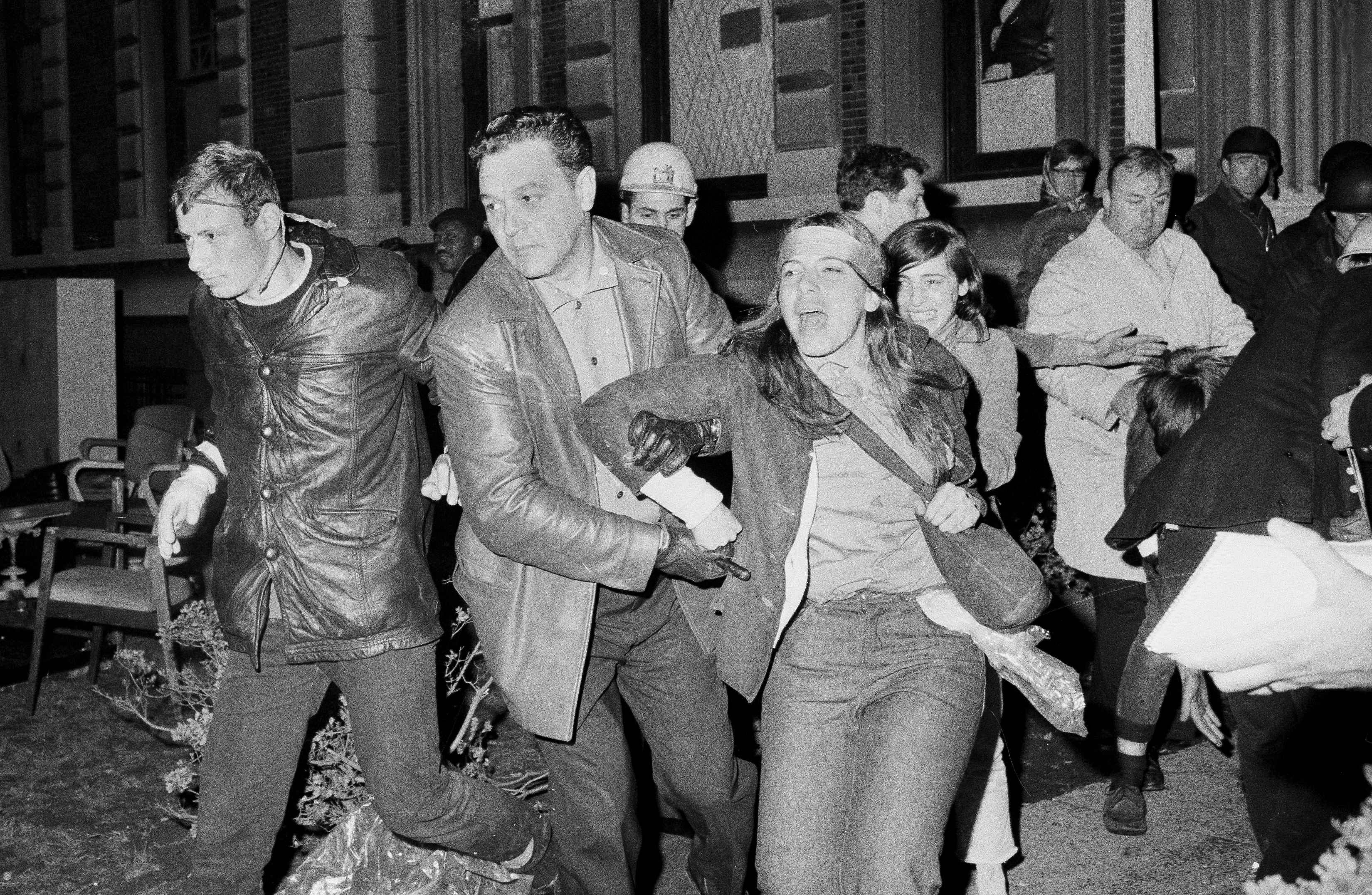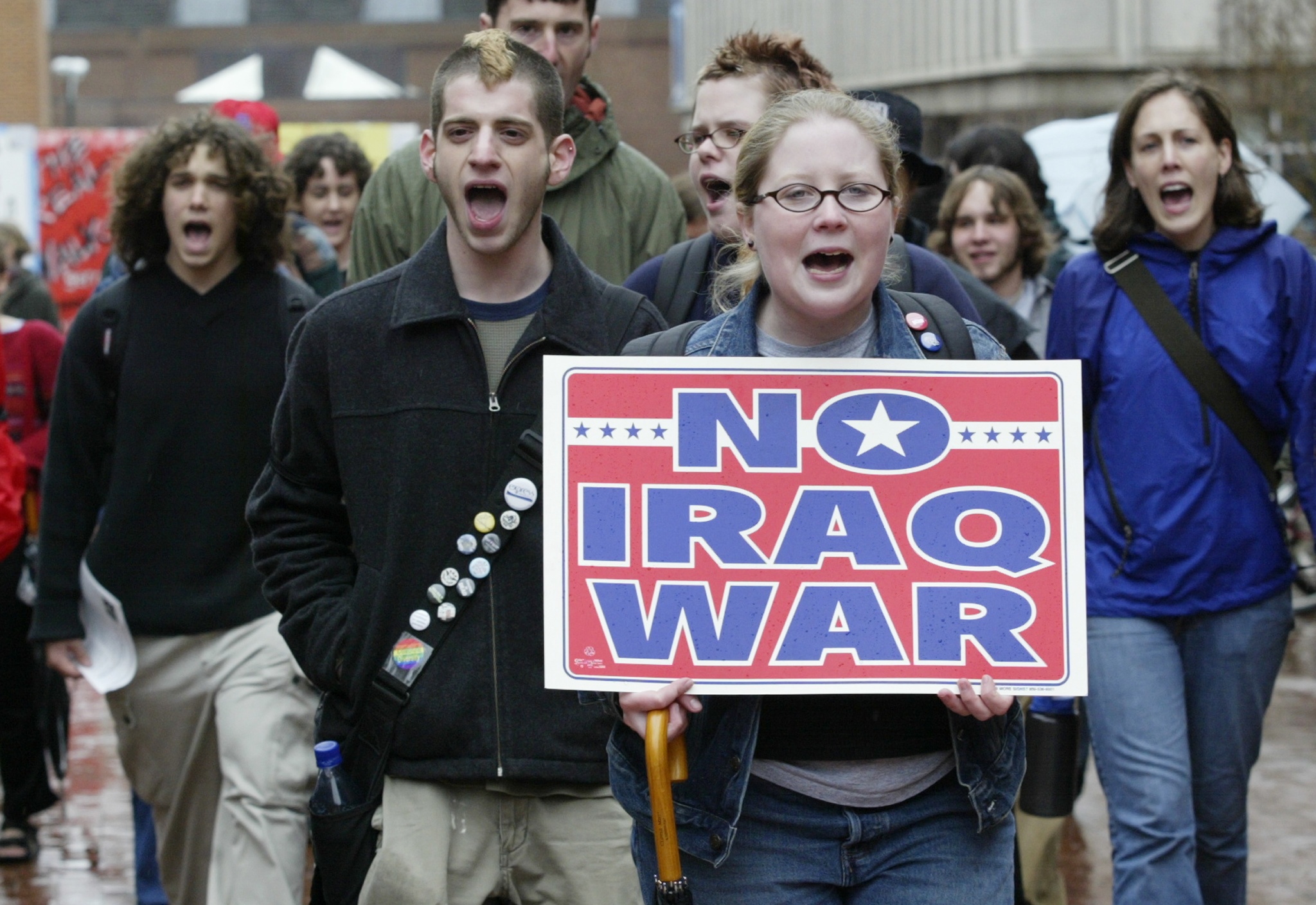
From coast to coast, university students in the United States are protesting against Israel’s war on Gaza, despite threats of suspension and arrest.
With Columbia University at the heart of the movement, institutes including Harvard, Yale, Tufts, Northwestern and several campuses in the University of Texas system have seen students set up encampments, demanding their institutions divest from companies they say are enabling the brutal war on Gaza.
More than 34,000 Palestinians, mostly women and children, have been killed by Israeli forces since the beginning of war on October 7.

This is not the first time that university students in the US have staged protests on campus. However, protesters and observers say that the crackdown on the student encampments has been particularly intense this time.
“One of the things that’s really striking is that in comparison to the 1960s, we are seeing much less aggression and radicalism of tactics on the part of the students,” said Angus Johnston, historian of American student activism in the history department at Hostos Community College in New York.
“We have seen very little physical injury or property damage. The, encampments are outside rather than for the most part taking over buildings. Compared to the protests of the 60s, particularly the late 60s, these protests are actually very, very mild. And yet they’re being met with a really harsh in many cases, governmental and administration.”
Helga Tawil-Souri, an associate professor of Middle East and Islamic studies at NYU told Al Jazeera the NYU protest on Gaza was peaceful as she stood outside a police station, awaiting the release of several students and faculty members. “I’ve been at NYU for almost 20 years and I’ve seen a number of protests happening. I don’t think I have ever seen a crackdown of this nature.”
Here are some of the key protests that US university students have led on campuses, and what they achieved:
1954-60: Brown v Board of Education and the Greensboro sit-ins
In 1954, the US Supreme Court ruled that state-sanctioned segregation in schools was unconstitutional. Racially segregated public spaces had been in operation from 1896 up until that ruling.
On February 1, 1960, four Black students at North Carolina Agricultural and Technical College, who earned the name the “Greensboro Four”, initiated peaceful sit-ins at “whites-only” lunch counters, starting with Woolworth’s in Greensboro. The students refused to get up when they were denied service. By February 5, the number of students sitting in had grown to 300. The movement quickly spread to other college towns and public places with both Black and white people joining in.
The sit-in movement was successful and dining facilities began to reintegrate by July 1960. Those protests marked the early success of the civil rights movement. They also led to the creation of the Student Nonviolent Coordinating Committee, which began as an interracial group advocating peaceful protest, in 1960.
1968-69: Protests against the Vietnam war
In April 1968, students at Columbia University and its affiliate, Barnard College, staged a protest against the Vietnam war, which had begun in 1954 and would last until 1975. The protests resulted in students seizing five campus buildings and even briefly taking the dean hostage.
Around a week after the protest began on April 30, about 1,000 officers from the New York City Tactical Patrol Force were called in by Columbia President Grayson L Kirk. The police arrested nearly 700 people on charges of criminal trespass and disorderly conduct. In some buildings, the police used force, injuring 148 people.
In the end, the protests forced Columbia to cut ties with a Pentagon institute which was doing research for the Vietnam War and won amnesty for demonstrators who had taken part in the protests. The also managed to stop the construction of a gym on public grounds in nearby Morningside Park, to which local Black Harlem residents would only have have been granted partial access. Columbia’s president and its provost, David B Truman both resigned as a result of the protests.
Students at Harvard also protested against the Vietnam war. On the night of April 9, 1969, a national student activist organisation, Students for a Democratic Society (SDS), pinned a list of demands on the door of the Harvard president’s house. The group was were opposed, in particular, to Harvard’s engagement with military policy – Dow Chemicals which supplied Napalm to the military had been invited to Harvard for a recruitment visit in 1967 – as well as the presence of the Reserve Officers’ Training Corps (ROTC) on campus. The next day, student protesters occupied the University Hall and were arrested, leading to wider protests and an eight-day strike, according to Harvard magazine.
As a result of the protest, ROTC left the university’s campus.
A year later, on May 4, 1970, the Ohio National Guard shot dead four Kent State University college students, and injured nine others, during a protest by 300 students against the Vietnam war and its expansion into Cambodia. They were also protesting the presence of the National Guard on campus.
The shootings caused outrage and led to more than 4 million students taking part in protests and walk-outs at hundreds more colleges and high schools across the country.
Just 11 days after that incident, on May 15, police opened fire on 100 Black students at Jackson State College, Mississippi, killing two and injuring 12. The students had gathered to protest against white drivers who frequently sped dangerously along a road which bisected the campus shouting racist abuse, rather than the Vietnam war.
1985: South Africa apartheid divestment
In the 1970s and 1980s, public school students in Soweto, South Africa staged protests against mandatory teaching in Afrikaans-language and the overcrowding of schools.
This snowballed into a global movement and, by 1985, American universities such as Columbia and the University of California were calling on their administrators to withdraw investments from companies tied to the apartheid regime in South Africa.
In Columbia, this effort was organised by the Coalition for a Free South Africa (CFSA), which, on April 4, 1985, blockaded the entrance to Columbia’s administrative building, Hamilton Hall.
A judge of the State Supreme Court in Manhattan ordered that the protesters allow access to the hall and, instead, take their protest to a designated area on the steps of Hamilton Hall and in the adjoining quadrangle.
A six-member panel of trustees was formed immediately after the end of the blockade on April 25, to consider divestment – pulling back its investments in companies tied to the apartheid regime. In late August, the panel concluded that divestment was not only the morally correct option, but it was also financially viable. Eventually, the university’s investments linked to apartheid South Africa were pulled.
1991: Protests against the Gulf war
In August 1990, Saddam Hussein’s Iraq invaded neighbouring Kuwait. A week later, the first US military forces arrived in Saudi Arabia. Upon the request of Saudi Arabia and other Gulf countries, a US-led coalition launched Operation Desert Storm in January 1991, bombing targets in both Iraq and Kuwait during a 43-day operation.
In late February 1991, students across several US university campuses – including the University of Michigan, Columbia University, George Washington University and Georgetown University – staged protests against US military involvement in the Gulf War. The police made 20 arrests at the University of California at Santa Cruz, the Washington Post, which described the protests as relatively “small and uneventful”, reported.

2003: Protests against the Iraq war
In March 2003, a US-led coalition launched began the bombardment of Iraq, which was followed by a ground invasion. The US claimed the move was part of its “war on terror”, using the allegation that Iraq’s leader possessed weapons of mass destruction. While Hussein was hanged in 2006, these weapons were never found. The Iraq war left the country rife with internal displacement, conflicts and economic instability.
American high school and university students walked out of their classes to protest against the Iraq war.
2018: Black Lives Matter protests
On May 25, 2020, George Floyd, a 46-year-old Black man, was killed by a white police officer, Derek Chauvin, in the state of Minnesota. Floyd’s death was caught on video which showed Chauvin kneeling on Floyd’s neck for around eight minutes.
The killing of Floyd sparked protests all over the US against systemic racism and police brutality under the “Black Lives Matter” movement which had begun in 2013 when George Zimmerman was acquitted of fatally shooting an unarmed young Black man, Trayvon Martin.
Several of these protests were staged by US university students. Student-led protests under the Black Lives Matter Movement also took place before 2018, such as in 2014 after the police killing of 18-year-old Michael Brown.







